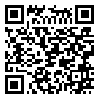Background: Leishman Denovani is an obligatory intracellular parasite that is seen such as Leishmanbody or Amustigote in intra reticolo-endothelial system. Leishmanenios is seen as sporadic-endemic or epidemic in many places in the world. In Iran in Fars state and west Azarbayjan is endemic and in other places are in sporadic form and is found in rural areas.
Case report: A four year-old girl was admitted with visceral Leishmaniasis and Subsequently developed peritoneal tuberculosis. The patient who lived in Dashte- Moghan, complained of abdominal pain and distention and weight loss from 1.5 years ago. The titre of IFA test for leishmansis was 1/1280. Leishman body was seen in bone marrow aspiration specimen. Bone marrow culture for leishmania was negative. The specimen of acsities fluid revealed sero- fibrino- purulent exudate with lymphocyic dominancy (over 90%). No response to classic lishmanisis treatment had been started unless the patient treated with anti tuberculoid regimen.
Conclusion: The function of the T-helper (Tht) lymphocytes will decrease in Kala-azar disease. This is why there is no skin reaction to Manteaux (PPD) diagnostic test the patient. The patient have been suffering from long-term malnutrition with its consequent immune defect. There was no evidences of cure in our patient during classic Kala-azar therapy. After she received anti tuberculosis therapy she revealed clinical improvement with Glucantim regimen as well.
| Rights and permissions | |
 |
This work is licensed under a Creative Commons Attribution-NonCommercial 4.0 International License. |


